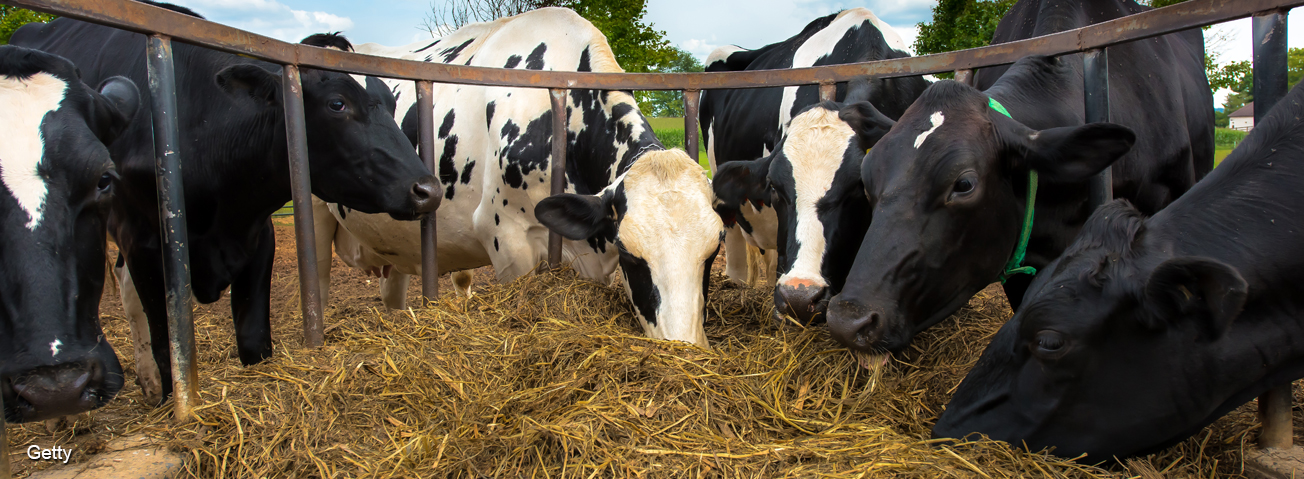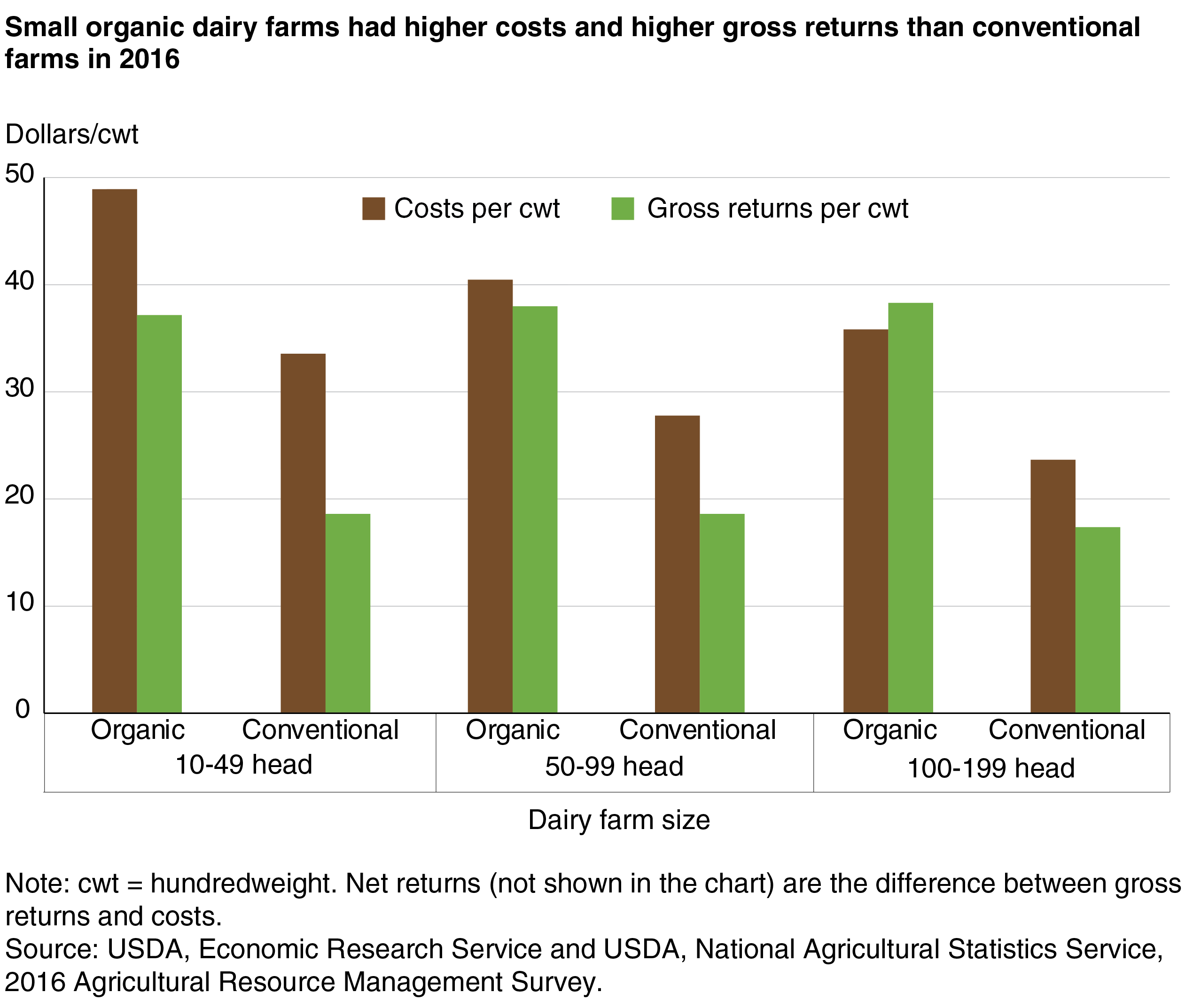
Organic Dairy Farms Realized Both Higher Costs and Higher Gross and Net Returns Than Conventional Dairy Farms
- by James M. MacDonald
- 9/1/2020
Dairy farms in the United States have faced persistent economic pressures, which have been particularly acute for small commercial farms with 10-199 milk cows. The number of such farms fell by 37 percent between 2007 and 2017, according to USDA’s Census of Agriculture, and more have left the industry since. Milk production has shifted to much larger farms (with 1,000 cows or more), which realize much lower costs on average than smaller farms.
Some smaller farms have converted to organic production, an expanding sector of the dairy industry. Organic production requires a significant initial investment. To meet USDA organic guidelines, farms go through a 3-year transition period. Organic dairy farms must forego the use of antibiotic drugs for the treatment of illnesses in the herd, and they must provide their cows with access to pasture. In addition, feed provided to the cows cannot use genetically modified seeds and must be grown without the use of most chemical fertilizers and pesticides.
USDA’s Economic Research Service and National Agricultural Statistics Service surveyed organic and conventional dairy farms in a special module of the 2016 Agricultural Resource Management Survey, which collected comprehensive information on dairy production practices and financial outcomes. Most organic respondents to the survey were small operations with 10-199 cows, which allowed for a comparison between small conventional and small organic dairy operations.
Organic dairy production costs were substantially higher than those for conventional dairy in 2016—about 50 percent higher per hundredweight (cwt) of milk produced. Production costs include operating costs for feed, energy, and bedding, as well as the costs of capital and of the paid and/or family labor provided to the farm. Organic production costs were highest among farms with 10-49 cows at $48.87/cwt, while production costs on conventional farms of that size were $33.54. Among farms with 100-199 cows in the herd, organic production costs amounted to $35.82/cwt, while conventional farms in that category reported lower costs of $23.68. However, organic operations received much higher prices for their milk—organic gross returns per cwt of milk produced were about twice the gross returns realized by comparably sized conventional operations in 2016.
With higher costs, but much higher gross returns, small organic dairy farms realized higher net returns than small conventional farms. Net returns are the difference between gross returns and costs. The smallest farms, with 10-49 cows, realized substantial net losses in 2016, but the smallest organic farms fared a little better than their conventional counterparts. Among farms with 50-99 cows, conventional farms realized negative net returns of -$9.24/cwt, while organic operations came close to breaking even at -$2.52/cwt. Only organic farms with 100-199 cows generated positive returns of $2.45/cwt, while conventional operations realized negative net returns of -$5.29/cwt.
This article is drawn from:
- MacDonald, J.M. (2020, August 3). Scale Economies Provide Advantages to Large Dairy Farms. Amber Waves, U.S. Department of Agriculture, Economic Research Service.
- MacDonald, J.M., Law, J. & Mosheim, R. (2020). Consolidation in U.S. Dairy Farming. U.S. Department of Agriculture, Economic Research Service. ERR-274.
You may also like:
- Milk Cost of Production Estimates. (n.d.). U.S. Department of Agriculture, Economic Research Service.
- Dairy Data. (n.d.). U.S. Department of Agriculture, Economic Research Service.
- Dairy. (n.d.). U.S. Department of Agriculture, Economic Research Service.
- MacDonald, J.M., Cessna, J. & Mosheim, R. (2016). Changing Structure, Financial Risks, and Government Policy for the U.S. Dairy Industry. U.S. Department of Agriculture, Economic Research Service. ERR-205.


